Welcome to ILEE, the Institute of Life, Earth and Environment at the University of Namur, committed to addressing pressing environmental issues.
We bring together a team of experts from diverse backgrounds and disciplines to work collaboratively using innovative technologies and rigorous scientific methods to make meaningful contributions to the field of environmental science.
The ILEE Institute is a member of Alternet, the European ecosystem research network.
Our institute is dedicated to advancing fundamental and applied research for a better understanding of the underlying processes that regulate life on earth, to characterizing anthropogenic pressures on the environment and vice versa, and to finding sustainable alternatives for managing natural resources, reducing pollution, and conserving and restoring biodiversity.

Read more
Spotlight
News
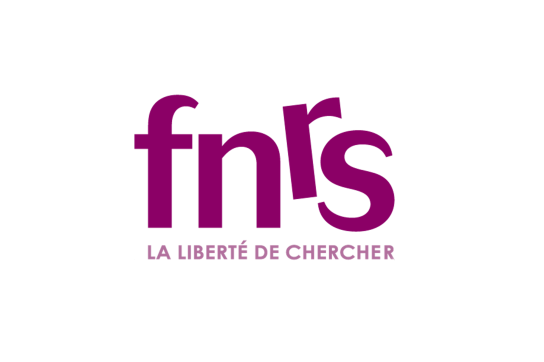
28 new research projects funded by the FNRS
28 new research projects funded by the FNRS
The F.R.S.-FNRS has just published the results of its various 2025 calls for proposals. These include the "Credits & Projects" and "WelCHANGE" calls, as well as the "FRIA" (Fund for Research Training in Industry and Agriculture) and "FRESH" (Fund for Research in the Humanities) calls, which aim to support doctoral theses. What are the results for UNamur? Twenty-eight projects have been selected, demonstrating the quality and richness of research at UNamur.
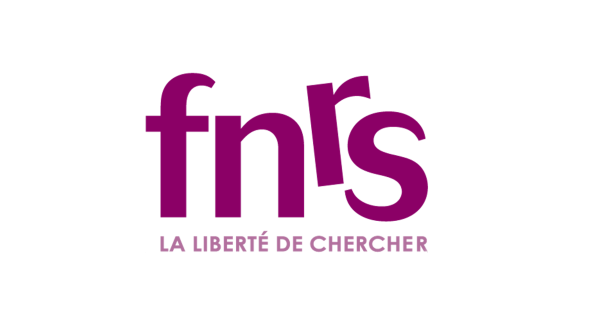
The "Credits & Projects" call for proposals resulted in 12 grants being awarded for ambitious new projects. These include two "equipment" grants, eight "research credits (CDR)" grants, and two "research projects (PDR)" grants, one of which is in collaboration with the ULB. The FRIA call for doctoral research support will fund eleven doctoral scholarships and the FRESH call will fund three.
Two prestigious Scientific Impulse Mandates (MIS) were also obtained. This three-year funding supports young permanent researchers who wish to develop an original and innovative research program by acquiring scientific autonomy within their department.
We would also like to highlight the two projects funded under the "WelCHANGE" call, a funding instrument for research projects with potential societal impact, led by a principal investigator in the humanities and social sciences.
Detailed results
Call for Equipment
- Xavier De Bolle, Narilis Institute, Co-promoter in collaboration with UCLouvain
- Luca Fusaro, NISM Institute
Call for Research Grants (CDR)
- Marc Hennequart, NARILIS Institute
- Nicolas Gillet, NARILIS Institute
- Jean-Yves Matroule, NARILIS Institute
- Patricia Renard, NARILIS Institute
- Francesco Renzi, NARILIS Institute
- Stéphane Vincent, NISM Institute
- Laurence Meurant, NaLTT Institute
- Emma-Louise Silva, NaLTT Institute
Call for Research Projects (PDR)
- Jérémy Dodeigne, Transitions Institute, Co-supervisor in collaboration with ULB
- Luc Henrard, NISM Institute; Co-supervisor: Yoann Olivier, NISM Institute
Fund for Training in Research in Industry and Agriculture (FRIA)
- Emma Bongiovanni - Supervisor: Catherine Michaux, NISM Institute
- Simon Chabot - Supervisor: Carine Michiels, Narilis Institute; Co-supervisor: Anne-Catherine Heuskin, Narilis Institute
- Lee Denis - Supervisor: Muriel Lepère, ILEE Institute
- Maé Desclez - Supervisor: Johan Yans, ILEE Institute; Co-supervisor: Hamed Pourkhorsandi (University of Toulouse)
- Pierre Lombard - Supervisor: Benoît Muylkens, Narilis Institute; Co-supervisor: Damien Coupeau, Narilis Institute
- Amandine Pecquet - Supervisor: Nicolas Gillet, Narilis Institute; Co-supervisor: Damien Coupeau, Narilis Institute
- Kilian Petit - Supervisor: Henri-François Renard, Narilis Institute; Co-supervisor: Xavier De Bolle, Narilis Institute
- Simon Rouxhet - Supervisor: Catherine Michaux, NISM Institute; Co-supervisor: Nicolas Gillet, Narilis Institute
- William Soulié - Supervisor: Yoann Olivier, NISM Institute
- Elisabeth Wanlin - Supervisor: Xavier De Bolle, Narilis Institute
- Laura Willam - Supervisor: Frédérik De Laender, ILEE Institute
Fund for Research in the Humanities (FRESH)
- Louis Droussin - Supervisor: Arthur Borriello, Transitions Institute; Co-supervisor: Vincent Jacquet, Transitions Institute
- Nicolas Larrea Avila - Supervisor: Guilhem Cassan, DeFIPP Institute
- Victor Sluyters – Supervisor: Wafa Hammedi, NADI Institute
- Amandine Leboutte - Co-supervisor: Erika Wauthia (UMons); Co-supervisor: Cédric Vanhoolandt, IRDENa Institute.
Scientific Impulse Mandate (MIS)
- Charlotte Beaudart, Narilis Institute
- Eli Thoré ILEE Institute
WelCHANGE Call
- Nathalie Burnay Transitions Institute, in collaboration with UCLouvain
- Catherine Guirkinger, DeFIPP Institute
Congratulations to all!
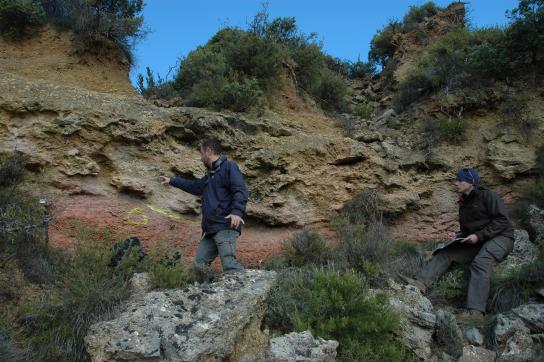
Climate disruption: fossils tell us about the past to better understand the future
Climate disruption: fossils tell us about the past to better understand the future
Today, our planet is undergoing major climatic changes. Particularly in the face of rising temperatures, it is not easy to predict how flora and fauna will react and adapt in disturbed ecosystems. International research, in which Professor Johan Yans' team (Department of Geology and ILEE Institute) is taking part, has found some answers in fossils, which have been the memory of Darwinian evolution for millions of years. Explanations.
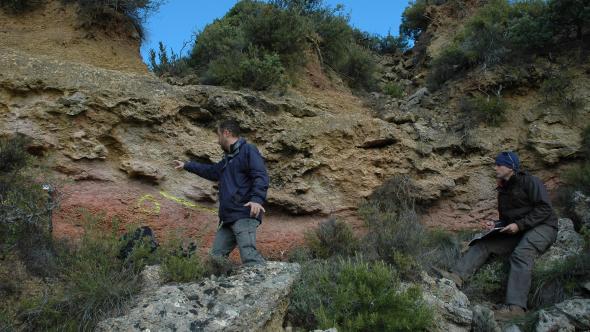
Photo: Excavation site at Albas, Massif des Corbières (France) © Gaëtan Rochez (UNamur)
Current predictions for biodiversity evolution in the face of climate change are based on models and scenarios derived from multidisciplinary studies. An article has just been published in the prestigious journal PNAS (Proceedings of the National Academy of Sciences), feeding into these scenarios. The researchers' original idea? To envisage an analogy between the biodiversity of the past and that of the future.
To understand, we need to go back 56 million years, to the transition between the Paleocene and the Eocene, a period characterized by intense global warming (named Paleocene-Eocene Thermal Maximum - or PETM). Paleoclimatologists consider this period to be a geological analogue of today's warming in terms of its amplitude (an increase of 5 to 8°C) and cause (a massive release of CO₂ into the atmosphere, similar to what we experience today).
At this time, global warming generated major disturbances on fauna. This change in climate, although 10 to 100 times slower than the one we experience today, coincided with the appearance of "modern" placental mammals (of which humans are a part), but also artiodactyls (ruminants, goats...), perissodactyls (horses, rhinoceroses...), bats, rodents and so on. Intense and rapid climatic disturbances generate major stresses on ecosystems: organisms try to adapt, some disappearing because they are unable to cope with these intense environmental changes, while others develop or evolve. This scenario was already well known...
But a few thousand years before PETM, another warming episode, named Pre-Onset Event (or POE), is recorded. It is less intense (+2°C) than the PETM, and more similar to current climate disturbances, leading researchers to investigate its impacts on faunas.
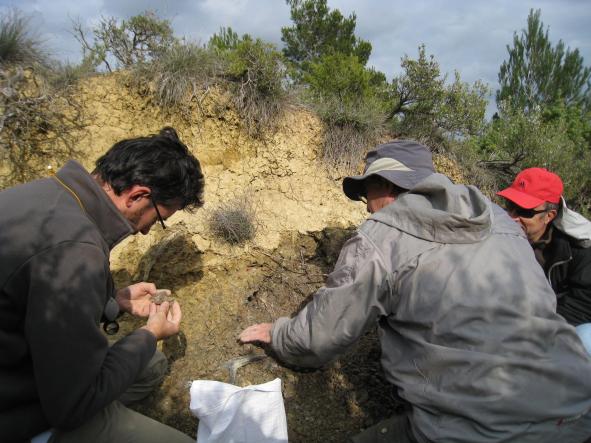
Photo: In search of fossils by fellow paleontologists from the University of Montpellier © ISEM
Fossils speak
Field research has been carried out in the Massif des Corbières, southern France: the geological layers representative of this period are numerous and thick. Thanks to carbon isotope geochemistry, Namur researchers have been able to date these layers with great precision, making it possible to detail the evolution of fossils over time.
The fossils thus discovered have delivered their memory. And this calls into question previously established scenarios on two key aspects:
- Species evolved rapidly as early as the EOP, a climatic event similar to today's disturbances.
- While researchers thought that European faunas were composed of species endemic to Europe, they discovered that these archaic animals also rubbed shoulders with more modern species, such as marsupials or rodents, having probably migrated from North America during the EOP.
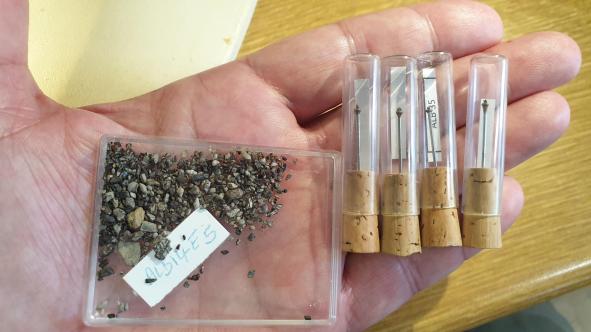
Photo: Mammal fossils discovered at Albas preserved in small glass tubes. These are the tiny teeth of a small "archaic" mammal called Paschatherium. Rodolphe Tabuce
So, during the EOP, species migrated from one continent to another... But how is this possible? It was thought that, at the time, the European continent was relatively isolated from the others by shallow seas. In reality, as a result of global warming, vast expanses of forest covered the high latitudes (present-day northern Greenland, Scandinavia and the Bering Strait in Siberia), serving as "natural land bridges" for forest fauna! Climatic disturbances therefore modified the flora, which in turn served as a passage between continents for "modern" faunas, also in the midst of upheaval.
The climatic disturbances of the POE, similar to those recorded today, therefore drastically influenced the faunas, notably by facilitating intercontinental migrations.
The impact of these decisive events during the EOP offers new avenues for reflection and study on the future of biodiversity in the context of current and future global warming.
The project team
"EDENs: Life during past super-warm climate events: Evolutionary Dynamics of Early EoceNe mammals from Southwestern France" is a multidisciplinary and international project in which Johan Yans, Jean-Yves Storme and Gaëtan Rochez (Department of Geology and ILEE Institute at UNamur) have been involved for the past 3 years. This research brings together the expertise of various partners:
- L'Institut des Sciences de l'Evolution de Montpellier (ISEM), Rodolphe Tabuce and Fabrice Lihoreau,
- Géosciences Montpellier, Flavia Girard and Gregory Ballas.
It is funded by the Agence Nationale de la Recherche (ANR-France). Its mission is to support and promote the development of fundamental and finalized research in all disciplines, and to strengthen the dialogue between science and society.
Media coverage
Sustainable development at UNamur
The university, in its missions, must be exemplary in terms of Sustainable Development in line with the United Nations Sustainable Development Goals (SDGs).
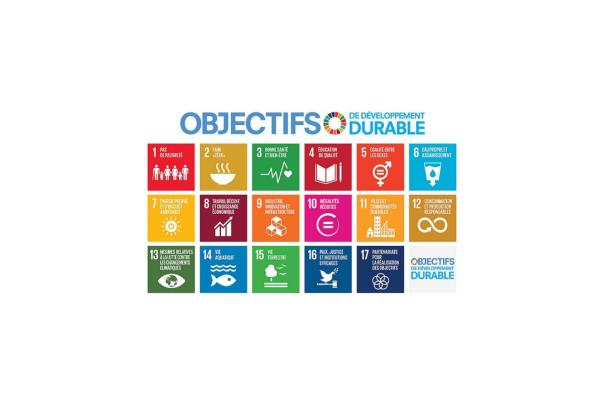
In terms of training, in addition to courses incorporating the SDOs, the University of Namur offers the University Certificate of Further Training in Sustainable Development. Aimed at members of organizations, administrations, companies, schools, etc. concerned or simply interested in the implications and challenges of sustainable development, it aims to offer information that is as thoughtful and diversified as possible, in order to help each participant better position, in his or her professional context, the issues linked to sustainable development that concern him or her more directly.
In terms of research, researchers work through 11 interdisciplinary research institutes. Johan Yans' team is active within the Institute ILEE - Institute of Life, Earth and Environment - and this research is a focus of activities devoted to Sustainable Development at UNamur.
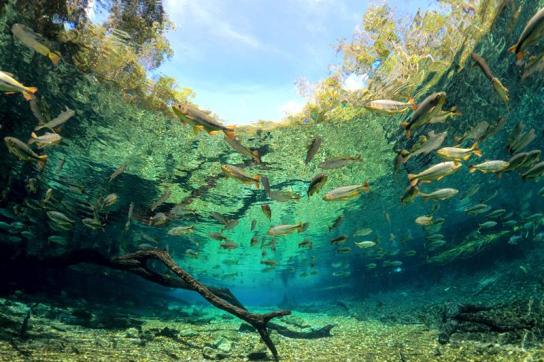
Biodiversity of American rivers analyzed over 30 years
Biodiversity of American rivers analyzed over 30 years
A team of American researchers, with the help of Frédérik De Laender, professor in the Department of Biology at UNamur, has just published in the prestigious journal Nature. Their study describes how changing stream temperatures and human introductions of fish can alter river biodiversity in the USA.
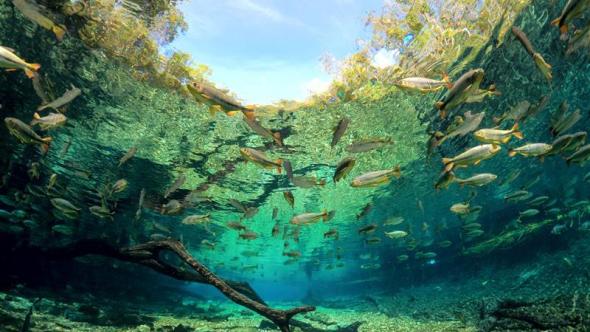
In 2021, Professor Frédérik De Laender was approached by American researchers to contribute to a study on the evolution of aquatic diversity in rivers in the USA. The aim: to analyze changes in aquatic diversity and identify the factors behind them. To answer this question, the researchers analyzed data collected over thirty years, covering 389 fish species in nearly 3,000 rivers and streams.
"There was already a lot of data on aquatic diversity in the USA, but it was scattered, recorded in different formats and produced using a variety of techniques and methodologies," explains Frédérik De Laender. "The challenge was therefore to harmonize them, in order to form a coherent whole, capable of revealing trends over several decades and on a continental scale."
Observed trends
In this study entitled "Diverging fish biodiversity trends in cold and warm rivers and streams" researchers studied 389 fish species in 2,992 rivers and streams, between 1993 and 2019. The results show contrasting trends depending on water temperature:
- In cold waters (< 15.4°C), the number of fish fell by 53% and the number of species by 32%. Small fish have declined, replaced by larger species often introduced for sport fishing.
- In warm waters (> 23.8°C), by contrast, the number of individuals has increased by 70% and diversity by 16%, with small opportunistic species dominating.
- Intermediate streams (15-24°C) showed little change.
These trends show that temperature changes and the introduction of certain fish species for fishing are helping to transform local aquatic communities.
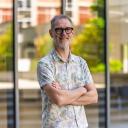
The good news is that our results also indicate that targeted management actions, such as river restoration, limiting introductions or adapting fishing practices, can have a positive impact.
Frédérik De Laender - Mini CV
Frédérik De Laender is Professor in the Biology Department at the University of Namur, where he heads the Environmental Ecology of Ecosystems Laboratory (ECCOLOGY lab). He is director of the Environmental and Evolutionary Biology Research Unit (URBE) and also a member of the Life-Earth-Environment (ILEE) and Complex Systems (naXys) Institutes at UNamur.
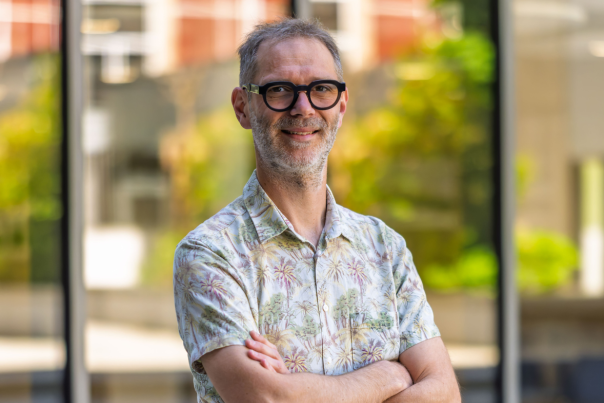
Frédérik De Laender is a theoretical community ecologist who studies the links between environmental change, biodiversity and ecosystem functioning. Primarily focused on modeling, he has also conducted experiments on plankton and contributed to meta-analyses. His work focuses in particular on ecological stability and coexistence, to better understand the mechanisms that determine community composition.
La recherche au Département de biologie
Le Département de biologie, riche de ses professeurs permanents mène une recherche scientifique internationale de pointe. Celle-ci se répartit entre 5 unités de recherche abordant des thématiques variées de biologie cellulaire et moléculaire, de microbiologie moléculaire, de biologie environnementale et évolutive, de biologie végétale et de didactique.
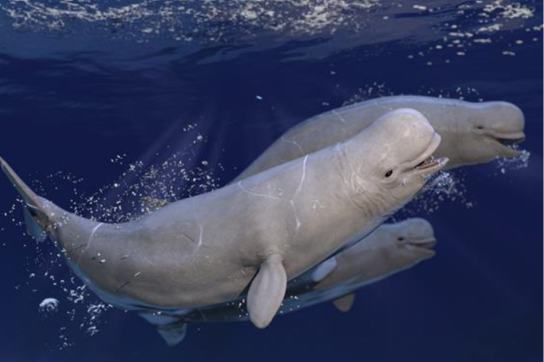
Understanding for better protection: an innovative joint FNRS-FRQ research project on the St. Lawrence beluga whale
Understanding for better protection: an innovative joint FNRS-FRQ research project on the St. Lawrence beluga whale
A project submitted by Professor Frédéric Silvestre's Laboratoire de Physiologie Évolutive et Adaptative (LEAP) at the University of Namur has been ranked among the top 6 research projects funded by the FNRS and the Fonds de recherche du Québec (FRQ) for scientific collaboration between Wallonia and Quebec. The aim? To understand the impact of human activities on St. Lawrence Estuary (SLE) belugas, using interdisciplinary approaches to help improve conservation strategies for this threatened species.
.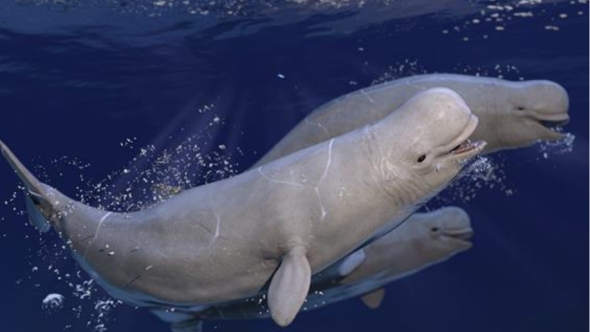
The beluga whale (Delphinapterus leucas) of the St. Lawrence Estuary (SLE) in Quebec, Canada, lives in a marine ecosystem heavily impacted by human activities and has shown no signs of recovery for several decades. Also known as the white whale or white dolphin, the beluga has a life expectancy of around 70 years. Infectious diseases and an increase in post-partum mortality in females have been observed, but the exact causes remain undetermined. However, exposure to contaminants is thought to be one of the causes of the increase in early mortality observed in recent years.
One of the main limitations to assessing the health of individuals in this population in relation to contaminant exposure is the lack of a method for determining the age of live beluga whales in the ESL.
Until now, the most reliable method for determining their age was to count the growth streaks on the inside of their teeth. The expertise of Namur-based researchers at Professor Frédéric Silvestre's Laboratoire de Physiologie Évolutive et Adaptative (LEAP) will enable the development of a new "epigenetic clock" and its use to estimate the age of living belugas, ultimately improving conservation strategies to help this threatened population recover.
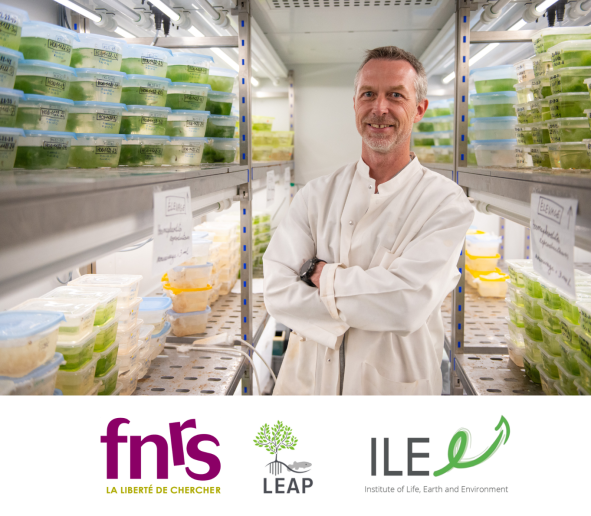
An epigenetic clock to determine the age of belugas
The project is entitled: "Une horloge épigénétique pour estimer l'âge des belugas du Saint-Laurent et son impact sur l'accumulation de contaminants, le stress et la santé de cette population menacée"
Epigenetics is the study of changes in gene activity, not involving modification of the DNA sequence, that can be transmitted during cell divisions. One of the elements that "regulate" gene expression is methylation: a chemical group that attaches itself to certain places on the DNA strand to promote or limit gene expression. In recent decades, it has been discovered that methylation changes in a predictable way during aging, according to a pattern known as the "epigenetic clock". Once this clock has been established for a given population of individuals, it is therefore possible to deduce an individual's age by looking for the presence or absence of methylation on DNA. All it takes is a few cells, such as skin cells.
An international, interdisciplinary team
A team of top scientists from both regions is involved.
- Pr Frédéric Silvestre and Dr Alice Dennis - UNamur, Belgium
- Dr Krishna Das - ULiège, Belgium
- Dr Jonathan Verreault - Université du Québec à Montréal, Canada
- Dr Stéphane Lair - Université de Montréal, Canada
- Dr Magali Houde - Environment and Climate Change Canada
- Dr Véronique Lesage - Fisheries and Oceans Canada
- Dr Robert Michaud - Group for Research and Education on Marine Mammals (GREMM), Quebec, Canada
Namur's expertise to preserve biodiversity
The research team will validate this new method and investigate the link with contaminant accumulation, physiological stress and overall health in this threatened population, comparing the ESL population with a healthier population of belugas from the Canadian Arctic.
In summary, this research aims to better understand how biological age, as measured by the epigenetic clock, influences the vulnerability of belugas to environmental stressors and their health.
This project will address fundamental research questions never before explored in beluga whales,
A new PhD student will join the Namur team, under the supervision of Frédéric Silvestre and will work in collaboration with researcher Justine Bélik on the basis of the EpiClock she developed for the mangrove rivulus.
Along with a project on mangrove rivulus in Florida and Belize, and one on fish and invertebrate populations in the Ecuadorian mountains, this is the third scientific project to use Namur researchers' expertise in ecological epigenetics in wild animals to help preserve biodiversity.
FNRS - The freedom to search
Collaborative research F.R.S.-FNRS - FRQ (Fédération Wallonie-Bruxelles - Québec)
The F.R.S.-FNRS has launched PINT-Bilat-P calls for bilateral research projects with the Fonds de Recherche du Québec. These calls are part of a drive to develop strategic partnerships. The aim of this bilateral research program is to create a leverage effect for scientific excellence and to encourage researchers from the Wallonia-Brussels Federation and Quebec to develop innovative joint research projects.

28 new research projects funded by the FNRS
28 new research projects funded by the FNRS
The F.R.S.-FNRS has just published the results of its various 2025 calls for proposals. These include the "Credits & Projects" and "WelCHANGE" calls, as well as the "FRIA" (Fund for Research Training in Industry and Agriculture) and "FRESH" (Fund for Research in the Humanities) calls, which aim to support doctoral theses. What are the results for UNamur? Twenty-eight projects have been selected, demonstrating the quality and richness of research at UNamur.

The "Credits & Projects" call for proposals resulted in 12 grants being awarded for ambitious new projects. These include two "equipment" grants, eight "research credits (CDR)" grants, and two "research projects (PDR)" grants, one of which is in collaboration with the ULB. The FRIA call for doctoral research support will fund eleven doctoral scholarships and the FRESH call will fund three.
Two prestigious Scientific Impulse Mandates (MIS) were also obtained. This three-year funding supports young permanent researchers who wish to develop an original and innovative research program by acquiring scientific autonomy within their department.
We would also like to highlight the two projects funded under the "WelCHANGE" call, a funding instrument for research projects with potential societal impact, led by a principal investigator in the humanities and social sciences.
Detailed results
Call for Equipment
- Xavier De Bolle, Narilis Institute, Co-promoter in collaboration with UCLouvain
- Luca Fusaro, NISM Institute
Call for Research Grants (CDR)
- Marc Hennequart, NARILIS Institute
- Nicolas Gillet, NARILIS Institute
- Jean-Yves Matroule, NARILIS Institute
- Patricia Renard, NARILIS Institute
- Francesco Renzi, NARILIS Institute
- Stéphane Vincent, NISM Institute
- Laurence Meurant, NaLTT Institute
- Emma-Louise Silva, NaLTT Institute
Call for Research Projects (PDR)
- Jérémy Dodeigne, Transitions Institute, Co-supervisor in collaboration with ULB
- Luc Henrard, NISM Institute; Co-supervisor: Yoann Olivier, NISM Institute
Fund for Training in Research in Industry and Agriculture (FRIA)
- Emma Bongiovanni - Supervisor: Catherine Michaux, NISM Institute
- Simon Chabot - Supervisor: Carine Michiels, Narilis Institute; Co-supervisor: Anne-Catherine Heuskin, Narilis Institute
- Lee Denis - Supervisor: Muriel Lepère, ILEE Institute
- Maé Desclez - Supervisor: Johan Yans, ILEE Institute; Co-supervisor: Hamed Pourkhorsandi (University of Toulouse)
- Pierre Lombard - Supervisor: Benoît Muylkens, Narilis Institute; Co-supervisor: Damien Coupeau, Narilis Institute
- Amandine Pecquet - Supervisor: Nicolas Gillet, Narilis Institute; Co-supervisor: Damien Coupeau, Narilis Institute
- Kilian Petit - Supervisor: Henri-François Renard, Narilis Institute; Co-supervisor: Xavier De Bolle, Narilis Institute
- Simon Rouxhet - Supervisor: Catherine Michaux, NISM Institute; Co-supervisor: Nicolas Gillet, Narilis Institute
- William Soulié - Supervisor: Yoann Olivier, NISM Institute
- Elisabeth Wanlin - Supervisor: Xavier De Bolle, Narilis Institute
- Laura Willam - Supervisor: Frédérik De Laender, ILEE Institute
Fund for Research in the Humanities (FRESH)
- Louis Droussin - Supervisor: Arthur Borriello, Transitions Institute; Co-supervisor: Vincent Jacquet, Transitions Institute
- Nicolas Larrea Avila - Supervisor: Guilhem Cassan, DeFIPP Institute
- Victor Sluyters – Supervisor: Wafa Hammedi, NADI Institute
- Amandine Leboutte - Co-supervisor: Erika Wauthia (UMons); Co-supervisor: Cédric Vanhoolandt, IRDENa Institute.
Scientific Impulse Mandate (MIS)
- Charlotte Beaudart, Narilis Institute
- Eli Thoré ILEE Institute
WelCHANGE Call
- Nathalie Burnay Transitions Institute, in collaboration with UCLouvain
- Catherine Guirkinger, DeFIPP Institute
Congratulations to all!

Climate disruption: fossils tell us about the past to better understand the future
Climate disruption: fossils tell us about the past to better understand the future
Today, our planet is undergoing major climatic changes. Particularly in the face of rising temperatures, it is not easy to predict how flora and fauna will react and adapt in disturbed ecosystems. International research, in which Professor Johan Yans' team (Department of Geology and ILEE Institute) is taking part, has found some answers in fossils, which have been the memory of Darwinian evolution for millions of years. Explanations.

Photo: Excavation site at Albas, Massif des Corbières (France) © Gaëtan Rochez (UNamur)
Current predictions for biodiversity evolution in the face of climate change are based on models and scenarios derived from multidisciplinary studies. An article has just been published in the prestigious journal PNAS (Proceedings of the National Academy of Sciences), feeding into these scenarios. The researchers' original idea? To envisage an analogy between the biodiversity of the past and that of the future.
To understand, we need to go back 56 million years, to the transition between the Paleocene and the Eocene, a period characterized by intense global warming (named Paleocene-Eocene Thermal Maximum - or PETM). Paleoclimatologists consider this period to be a geological analogue of today's warming in terms of its amplitude (an increase of 5 to 8°C) and cause (a massive release of CO₂ into the atmosphere, similar to what we experience today).
At this time, global warming generated major disturbances on fauna. This change in climate, although 10 to 100 times slower than the one we experience today, coincided with the appearance of "modern" placental mammals (of which humans are a part), but also artiodactyls (ruminants, goats...), perissodactyls (horses, rhinoceroses...), bats, rodents and so on. Intense and rapid climatic disturbances generate major stresses on ecosystems: organisms try to adapt, some disappearing because they are unable to cope with these intense environmental changes, while others develop or evolve. This scenario was already well known...
But a few thousand years before PETM, another warming episode, named Pre-Onset Event (or POE), is recorded. It is less intense (+2°C) than the PETM, and more similar to current climate disturbances, leading researchers to investigate its impacts on faunas.

Photo: In search of fossils by fellow paleontologists from the University of Montpellier © ISEM
Fossils speak
Field research has been carried out in the Massif des Corbières, southern France: the geological layers representative of this period are numerous and thick. Thanks to carbon isotope geochemistry, Namur researchers have been able to date these layers with great precision, making it possible to detail the evolution of fossils over time.
The fossils thus discovered have delivered their memory. And this calls into question previously established scenarios on two key aspects:
- Species evolved rapidly as early as the EOP, a climatic event similar to today's disturbances.
- While researchers thought that European faunas were composed of species endemic to Europe, they discovered that these archaic animals also rubbed shoulders with more modern species, such as marsupials or rodents, having probably migrated from North America during the EOP.

Photo: Mammal fossils discovered at Albas preserved in small glass tubes. These are the tiny teeth of a small "archaic" mammal called Paschatherium. Rodolphe Tabuce
So, during the EOP, species migrated from one continent to another... But how is this possible? It was thought that, at the time, the European continent was relatively isolated from the others by shallow seas. In reality, as a result of global warming, vast expanses of forest covered the high latitudes (present-day northern Greenland, Scandinavia and the Bering Strait in Siberia), serving as "natural land bridges" for forest fauna! Climatic disturbances therefore modified the flora, which in turn served as a passage between continents for "modern" faunas, also in the midst of upheaval.
The climatic disturbances of the POE, similar to those recorded today, therefore drastically influenced the faunas, notably by facilitating intercontinental migrations.
The impact of these decisive events during the EOP offers new avenues for reflection and study on the future of biodiversity in the context of current and future global warming.
The project team
"EDENs: Life during past super-warm climate events: Evolutionary Dynamics of Early EoceNe mammals from Southwestern France" is a multidisciplinary and international project in which Johan Yans, Jean-Yves Storme and Gaëtan Rochez (Department of Geology and ILEE Institute at UNamur) have been involved for the past 3 years. This research brings together the expertise of various partners:
- L'Institut des Sciences de l'Evolution de Montpellier (ISEM), Rodolphe Tabuce and Fabrice Lihoreau,
- Géosciences Montpellier, Flavia Girard and Gregory Ballas.
It is funded by the Agence Nationale de la Recherche (ANR-France). Its mission is to support and promote the development of fundamental and finalized research in all disciplines, and to strengthen the dialogue between science and society.
Media coverage
Sustainable development at UNamur
The university, in its missions, must be exemplary in terms of Sustainable Development in line with the United Nations Sustainable Development Goals (SDGs).

In terms of training, in addition to courses incorporating the SDOs, the University of Namur offers the University Certificate of Further Training in Sustainable Development. Aimed at members of organizations, administrations, companies, schools, etc. concerned or simply interested in the implications and challenges of sustainable development, it aims to offer information that is as thoughtful and diversified as possible, in order to help each participant better position, in his or her professional context, the issues linked to sustainable development that concern him or her more directly.
In terms of research, researchers work through 11 interdisciplinary research institutes. Johan Yans' team is active within the Institute ILEE - Institute of Life, Earth and Environment - and this research is a focus of activities devoted to Sustainable Development at UNamur.

Biodiversity of American rivers analyzed over 30 years
Biodiversity of American rivers analyzed over 30 years
A team of American researchers, with the help of Frédérik De Laender, professor in the Department of Biology at UNamur, has just published in the prestigious journal Nature. Their study describes how changing stream temperatures and human introductions of fish can alter river biodiversity in the USA.

In 2021, Professor Frédérik De Laender was approached by American researchers to contribute to a study on the evolution of aquatic diversity in rivers in the USA. The aim: to analyze changes in aquatic diversity and identify the factors behind them. To answer this question, the researchers analyzed data collected over thirty years, covering 389 fish species in nearly 3,000 rivers and streams.
"There was already a lot of data on aquatic diversity in the USA, but it was scattered, recorded in different formats and produced using a variety of techniques and methodologies," explains Frédérik De Laender. "The challenge was therefore to harmonize them, in order to form a coherent whole, capable of revealing trends over several decades and on a continental scale."
Observed trends
In this study entitled "Diverging fish biodiversity trends in cold and warm rivers and streams" researchers studied 389 fish species in 2,992 rivers and streams, between 1993 and 2019. The results show contrasting trends depending on water temperature:
- In cold waters (< 15.4°C), the number of fish fell by 53% and the number of species by 32%. Small fish have declined, replaced by larger species often introduced for sport fishing.
- In warm waters (> 23.8°C), by contrast, the number of individuals has increased by 70% and diversity by 16%, with small opportunistic species dominating.
- Intermediate streams (15-24°C) showed little change.
These trends show that temperature changes and the introduction of certain fish species for fishing are helping to transform local aquatic communities.

The good news is that our results also indicate that targeted management actions, such as river restoration, limiting introductions or adapting fishing practices, can have a positive impact.
Frédérik De Laender - Mini CV
Frédérik De Laender is Professor in the Biology Department at the University of Namur, where he heads the Environmental Ecology of Ecosystems Laboratory (ECCOLOGY lab). He is director of the Environmental and Evolutionary Biology Research Unit (URBE) and also a member of the Life-Earth-Environment (ILEE) and Complex Systems (naXys) Institutes at UNamur.

Frédérik De Laender is a theoretical community ecologist who studies the links between environmental change, biodiversity and ecosystem functioning. Primarily focused on modeling, he has also conducted experiments on plankton and contributed to meta-analyses. His work focuses in particular on ecological stability and coexistence, to better understand the mechanisms that determine community composition.
La recherche au Département de biologie
Le Département de biologie, riche de ses professeurs permanents mène une recherche scientifique internationale de pointe. Celle-ci se répartit entre 5 unités de recherche abordant des thématiques variées de biologie cellulaire et moléculaire, de microbiologie moléculaire, de biologie environnementale et évolutive, de biologie végétale et de didactique.

Understanding for better protection: an innovative joint FNRS-FRQ research project on the St. Lawrence beluga whale
Understanding for better protection: an innovative joint FNRS-FRQ research project on the St. Lawrence beluga whale
A project submitted by Professor Frédéric Silvestre's Laboratoire de Physiologie Évolutive et Adaptative (LEAP) at the University of Namur has been ranked among the top 6 research projects funded by the FNRS and the Fonds de recherche du Québec (FRQ) for scientific collaboration between Wallonia and Quebec. The aim? To understand the impact of human activities on St. Lawrence Estuary (SLE) belugas, using interdisciplinary approaches to help improve conservation strategies for this threatened species.
.
The beluga whale (Delphinapterus leucas) of the St. Lawrence Estuary (SLE) in Quebec, Canada, lives in a marine ecosystem heavily impacted by human activities and has shown no signs of recovery for several decades. Also known as the white whale or white dolphin, the beluga has a life expectancy of around 70 years. Infectious diseases and an increase in post-partum mortality in females have been observed, but the exact causes remain undetermined. However, exposure to contaminants is thought to be one of the causes of the increase in early mortality observed in recent years.
One of the main limitations to assessing the health of individuals in this population in relation to contaminant exposure is the lack of a method for determining the age of live beluga whales in the ESL.
Until now, the most reliable method for determining their age was to count the growth streaks on the inside of their teeth. The expertise of Namur-based researchers at Professor Frédéric Silvestre's Laboratoire de Physiologie Évolutive et Adaptative (LEAP) will enable the development of a new "epigenetic clock" and its use to estimate the age of living belugas, ultimately improving conservation strategies to help this threatened population recover.

An epigenetic clock to determine the age of belugas
The project is entitled: "Une horloge épigénétique pour estimer l'âge des belugas du Saint-Laurent et son impact sur l'accumulation de contaminants, le stress et la santé de cette population menacée"
Epigenetics is the study of changes in gene activity, not involving modification of the DNA sequence, that can be transmitted during cell divisions. One of the elements that "regulate" gene expression is methylation: a chemical group that attaches itself to certain places on the DNA strand to promote or limit gene expression. In recent decades, it has been discovered that methylation changes in a predictable way during aging, according to a pattern known as the "epigenetic clock". Once this clock has been established for a given population of individuals, it is therefore possible to deduce an individual's age by looking for the presence or absence of methylation on DNA. All it takes is a few cells, such as skin cells.
An international, interdisciplinary team
A team of top scientists from both regions is involved.
- Pr Frédéric Silvestre and Dr Alice Dennis - UNamur, Belgium
- Dr Krishna Das - ULiège, Belgium
- Dr Jonathan Verreault - Université du Québec à Montréal, Canada
- Dr Stéphane Lair - Université de Montréal, Canada
- Dr Magali Houde - Environment and Climate Change Canada
- Dr Véronique Lesage - Fisheries and Oceans Canada
- Dr Robert Michaud - Group for Research and Education on Marine Mammals (GREMM), Quebec, Canada
Namur's expertise to preserve biodiversity
The research team will validate this new method and investigate the link with contaminant accumulation, physiological stress and overall health in this threatened population, comparing the ESL population with a healthier population of belugas from the Canadian Arctic.
In summary, this research aims to better understand how biological age, as measured by the epigenetic clock, influences the vulnerability of belugas to environmental stressors and their health.
This project will address fundamental research questions never before explored in beluga whales,
A new PhD student will join the Namur team, under the supervision of Frédéric Silvestre and will work in collaboration with researcher Justine Bélik on the basis of the EpiClock she developed for the mangrove rivulus.
Along with a project on mangrove rivulus in Florida and Belize, and one on fish and invertebrate populations in the Ecuadorian mountains, this is the third scientific project to use Namur researchers' expertise in ecological epigenetics in wild animals to help preserve biodiversity.
FNRS - The freedom to search
Collaborative research F.R.S.-FNRS - FRQ (Fédération Wallonie-Bruxelles - Québec)
The F.R.S.-FNRS has launched PINT-Bilat-P calls for bilateral research projects with the Fonds de Recherche du Québec. These calls are part of a drive to develop strategic partnerships. The aim of this bilateral research program is to create a leverage effect for scientific excellence and to encourage researchers from the Wallonia-Brussels Federation and Quebec to develop innovative joint research projects.
Agenda
IBAF Conference 2026
Sixteen years after hosting the 2010 edition, UNamur is delighted to revive this scientific tradition and welcome the 11th edition of the Rencontres Ion Beam Applications Francophones (IBAF). This edition will be organized by scientists from the UNamur Physics Department who are active in the fields of materials science, biophysics, and interdisciplinary applications of ion beams.

The IBAF Meetings have been organized since 2003, every two years since 2008, by the Ion Beams Division of the French Vacuum Society (SFV), the oldest national vacuum society in the world, which celebrated its 80th anniversary in 2025.
As in previous editions, IBAF 2026 will offer a rich and varied program with guest lectures, oral and poster presentations, and technical sessions. All this will be complemented by an industrial presence to promote exchanges between research and innovation.
The conference will cover a wide range of topics, from ion beam instruments and techniques to the physics of ion-matter interactions, including the analysis and modification of materials, applications in the life sciences, earth and environmental sciences, and heritage sciences.
This content is currently being migrated. We invite you to visit the research institute's external page.



